When it comes to choosing a cage for your small pet, such as a hamster, rat, or rabbit, there are a few important factors to consider. One of the most crucial elements is ensuring that the cage provides ample space and promotes mental stimulation for your furry friend. A mentally stimulating cage contributes significantly to your pet’s overall well-being, allowing them to engage in natural behaviors and reducing the risk of boredom and stress.
Not all cages are created equal, and it’s essential to select one that meets your small pet’s needs. Safety, cleanliness, and the inclusion of appropriate accessories are also critical considerations. By choosing the right cage, you can ensure that your small pet has a happy and fulfilling environment to thrive in.
Key Takeaways:
- Choosing the right cage is crucial for your small pet’s mental health and well-being.
- A mentally stimulating cage provides ample space and promotes natural behaviors, reducing the risk of boredom and stress.
- Safety and cleanliness are essential factors to consider when selecting a cage.
- Including appropriate accessories and enrichment items in the cage enhances mental stimulation.
- By choosing the right cage, you can provide a happy and mentally stimulated environment for your small pet.
Factors to Consider When Choosing a Hamster Cage
When selecting a cage for a hamster, there are several important factors to consider to ensure the well-being and happiness of your furry friend. Choosing the right hamster cage involves more than just the aesthetics; it’s crucial to provide a suitable environment that allows the hamster to thrive.
One of the most significant considerations is the size of the hamster cage. Hamsters are active creatures that love to explore and exercise. Therefore, it’s vital to choose a cage that provides ample room for them to move around freely. A spacious cage allows hamsters to engage in natural behaviors like running, climbing, and burrowing.
Another important consideration is the bar spacing of the cage. The bars should be spaced closely enough to prevent the hamster from escaping while still allowing proper ventilation. Escape can not only lead to potential hazards in your home but also put the hamster at risk of injury or even death.
Non-toxic materials are a must when it comes to choosing a hamster cage. Hamsters have a natural instinct to chew on their surroundings. Opting for a cage made of safe materials ensures that your hamster won’t ingest anything harmful.
Cleaning and maintenance should also be taken into account. Regular cleaning is essential to keep the cage hygienic and odor-free. Choosing a cage with easily removable and washable components makes the cleaning process more convenient for you and promotes a healthy environment for your hamster.
Mental stimulation is crucial for a hamster’s well-being. When selecting a hamster cage, consider including accessories that provide enrichment and mental stimulation. A running wheel allows hamsters to exercise, while hiding areas and tunnels create a secure and stimulating environment for them to explore.
Below is a table that summarizes the factors to consider when choosing a hamster cage:
| Factors to Consider | Description |
|---|---|
| Size | Choose a cage with ample space for the hamster to move and play. |
| Bar Spacing | The bars should be closely spaced to prevent escape but allow ventilation. |
| Materials | Ensure the cage is made of non-toxic materials. |
| Cleaning and maintenance | Choose a cage with easily removable and washable components. |
| Mental Stimulation | Include accessories like a running wheel, hiding areas, and tunnels. |
By considering these factors, you can choose a hamster cage that provides a safe, comfortable, and mentally stimulating environment for your beloved furry companion.
Ensuring Mental Stimulation for Pet Rats
When it comes to caring for pet rats, providing them with mental stimulation is crucial for their overall wellbeing. Rats are highly social and active animals that thrive when they have opportunities to play, explore, and interact with their environment. Choosing the right rat cage is essential in ensuring they receive the mental stimulation they need.
A suitable pet rat cage should offer ample space for rats to move around, play, and exercise. It should be large enough to accommodate multiple levels, allowing rats to climb, jump, and explore different areas within the cage. The cage should also have various accessories such as tunnels, hammocks, and toys to offer additional mental stimulation and enrichment.
When considering the size of the rat cage, it’s important to keep in mind that rats are highly social animals. They thrive when they have companionship, so it is advisable to keep them in pairs or small groups. Providing a larger cage will not only accommodate more rats but also allow for increased social interaction and play.
| Rat Cage Size Recommendations | Number of Rats | Minimum Cage Dimensions |
|---|---|---|
| 1-2 rats | 1-2 | 24 inches long x 12 inches wide x 24 inches high |
| 3-4 rats | 3-4 | 36 inches long x 24 inches wide x 24 inches high |
| 5-6 rats | 5-6 | 48 inches long x 24 inches wide x 24 inches high |
By providing a spacious and mentally stimulating rat cage, you can ensure that your pet rats have a happy and healthy environment to thrive in. Remember to regularly clean the cage, provide fresh bedding, and rotate toys and accessories to keep your rats engaged and entertained.
Expert Tip:
“When selecting a rat cage, choose one that allows for natural behaviors such as climbing, jumping, and burrowing. Add tunnels, ropes, and platforms to encourage exploration and physical activity.”
– Dr. Emily Sullivan, Small Animal Veterinarian
Providing a Spacious Cage for Pet Bunnies
When it comes to choosing a cage for your bunny, size matters. Despite their small stature, bunnies require ample space to live a healthy and happy life. A cramped cage can lead to stress, health issues, and restricted movement for your furry friend.
When selecting a bunny cage, prioritize spaciousness to provide your bunny with the freedom to hop, run, and stretch out. Look for a cage that is large enough to comfortably accommodate your bunny’s size and allows for unrestricted movement. Consider the breed and size of your bunny when determining the appropriate cage dimensions.
To ensure a comfortable living environment for your bunny, allow extra space for essential accessories such as a water bottle, food bowl, and toys. These additions promote physical and mental stimulation for your bunny, contributing to their overall well-being.
| Factors to Consider when Choosing a Bunny Cage | Explanation |
|---|---|
| Size | Adequate space for hopping, running, and stretching out |
| Accessibility | Easy access for cleaning and maintenance |
| Material | Durable and non-toxic for the safety of your bunny |
| Accessories | Extra space for a water bottle, food bowl, and toys |
Remember, a bunny cage is more than just a shelter; it’s a home for your beloved pet. Providing a spacious and stimulating environment is crucial for their health and happiness. Invest in a bunny cage that prioritizes both comfort and freedom of movement for your furry friend.
Note: The image above illustrates a spacious bunny cage that allows for free movement and includes essential accessories.
Environmental Enrichment for Small Pets
Small pets, such as hamsters, rats, and bunnies, require environmental enrichment to keep them mentally stimulated and happy. Providing companionship, plenty of toys, and opportunities for exploration are important ways to enhance the mental well-being of small pets.
One effective method of mental stimulation is to rotate the toys in the pet’s cage regularly. This not only keeps them engaged, but also prevents boredom from setting in. Introducing new toys and removing old ones can provide fresh challenges and prevent monotony.
Another way to provide mental stimulation is to hide treats or food puzzles throughout the cage. This encourages the pet to search for their food, stimulating their natural foraging instincts. It also adds an element of surprise and excitement to their daily routine.
Offering a variety of textures and materials can also contribute to the mental well-being of small pets. Providing different bedding materials, such as shredded paper or wood shavings, allows the pet to explore and dig. Adding chew toys made of safe materials, like untreated wood or hardened minerals, can help satisfy their natural chewing instincts.
In addition to the cage itself, the overall environment in which the pet lives plays a crucial role in their mental health. Placing the cage in a central location in the home allows the pet to observe and interact with their surroundings, which can provide mental stimulation.
Quote:
“Environmental enrichment is essential for small pets as it promotes mental and physical well-being. By providing a variety of toys, hiding treats, and offering a stimulating overall environment, we can ensure that our furry friends lead happy and fulfilled lives.” – Dr. Emily Johnson, Small Animal Behavior Expert
By incorporating these environmental enrichment techniques into the small pet’s daily routine, owners can ensure that their pets receive the mental stimulation they need to thrive. Promoting exploration, challenge, and social interaction not only benefits the pet’s well-being, but also strengthens the bond between the pet and their owner.
| Environmental Enrichment Option | Description | Benefits |
|---|---|---|
| Rotating Toys | Regularly change the toys in the cage to prevent boredom and provide new challenges | – Keeps the pet engaged and stimulated – Prevents monotony and boredom |
| Hidden Treats | Hide treats or food puzzles throughout the cage to stimulate natural foraging behavior | – Engages the pet’s natural instincts – Adds an element of excitement and surprise |
| Varied Textures and Materials | Offer a variety of bedding materials and safe chew toys to satisfy natural behaviors | – Allows the pet to explore and dig – Helps satisfy chewing instincts |
| Central Cage Location | Place the cage in a central location in the home to allow the pet to observe and interact with their surroundings | – Provides mental stimulation – Increases social interaction |
Cage Size Considerations for Small Pets
Choosing the right cage size is essential for the mental and physical well-being of our small pets. Each species has specific needs and behaviors that should be taken into account when selecting an appropriate cage size.
Hamsters:
For hamsters, it’s crucial to provide a cage with ample space for them to move around freely. Hamsters are active and love to explore, so a larger cage will allow them to engage in natural behaviors like burrowing, climbing, and running. Additionally, consider the bar spacing to prevent any escapes or injuries.
Rats:
Rats are social animals and require even more space to live happily. A large cage with multiple levels and enough room for physical activities is necessary. Since rats are highly intelligent, providing plenty of space for social interaction and enrichment items is essential to keep them mentally stimulated and prevent boredom.
Bunnies:
Bunnies are known for their active nature and love for hopping and stretching. They need a spacious cage that allows them to move freely and exhibit their natural behaviors. The cage should be large enough to accommodate their size comfortably. Consider adding ramps, platforms, and hiding areas to provide extra stimulation and enrichment for your bunny.
Choosing the right cage size:
When selecting a cage for your small pet, it’s important to consider their specific needs and behaviors. Here are a few factors to keep in mind:
- Research the recommended minimum cage size for your pet species.
- Take into account the pet’s activity level and space requirements.
- Ensure the cage has enough room for essential accessories such as food bowls, water bottles, and toys.
- Consider the number of pets you plan to house in the cage. If you have multiple pets, a larger cage will be necessary to provide enough space for social interaction.
- Regularly assess and modify the cage size as your pet grows or if you introduce new accessories or companions.
Providing the appropriate cage size is vital for the overall well-being of your small pet. It allows them to engage in natural behaviors, promotes mental stimulation, and ensures a healthy and happy life.
| Small Pet | Recommended Cage Size |
|---|---|
| Hamsters | Minimum of 360 square inches (e.g., 18×20 inches) |
| Rats | Minimum of 2 cubic feet (e.g., 24x14x12 inches) |
| Bunnies | Minimum of 12 square feet of space (e.g., 4×3 feet) |
Conclusion
Choosing the right cage for small pets is crucial for their mental health and overall well-being. A well-designed cage provides ample space for the pet to move and play, preventing them from feeling constrained or bored. It is important to ensure that the cage has appropriate bar spacing to prevent escapes and injuries, keeping the pet safe and secure.
In addition to space, the materials used in the cage should be non-toxic to avoid any potential harm to the pet. Easy cleaning and maintenance are also essential to maintain a clean and hygienic environment for the pet. Regular cleaning prevents the accumulation of dirt and bacteria, keeping the pet healthy and safe.
Furthermore, including accessories and enrichment items in the cage is vital for promoting mental stimulation. Toys, tunnels, and hiding areas allow the pet to engage in natural behaviors, reducing the risk of boredom and stress. By providing a mentally stimulating environment, pet owners can ensure that their small pets lead a fulfilling and happy life.
When choosing a cage for a small pet, it is essential to consider their specific needs and behaviors. Hamsters, rats, and bunnies all have different requirements in terms of space and social interaction. By selecting the appropriate cage size and considering the individual needs of the pet, pet owners can create a comfortable and enriching living space for their small pets.
In conclusion, choosing the right cage for small pets is a critical decision that directly impacts their mental health and overall well-being. With the right cage, pet owners can provide their small pets with a safe, comfortable, and mentally stimulating environment, ensuring that they live a happy and fulfilled life.
FAQ
What factors should I consider when choosing a cage for my small pet’s mental health?
When selecting a cage for a small pet, such as a hamster, rat, or rabbit, it is important to choose one that provides ample space and promotes mental stimulation. Safety, cleanliness, and the inclusion of appropriate accessories are also important factors to consider.
What should I consider when choosing a cage for a hamster?
When choosing a cage for a hamster, consider the space for the hamster to move around freely, appropriate bar spacing to prevent escapes and injuries, non-toxic materials, easy cleaning and maintenance, and the inclusion of accessories such as a wheel and hiding areas for mental stimulation and enrichment.
How can I ensure mental stimulation for pet rats?
Pet rats are social and active animals that require mental stimulation. Choose a large cage with multiple levels and accessories such as tunnels and toys to provide the necessary mental stimulation for pet rats. Consider the social needs of rats and provide companionship by keeping them in pairs or small groups.
What should I look for in a cage for a bunny?
When choosing a cage for a bunny, ensure there is ample room for hopping, running, and stretching out. Consider the breed and size of the bunny when choosing the appropriate cage size. Include additional space for accessories such as a water bottle, food bowl, and toys.
How can I provide environmental enrichment for small pets?
Providing companionship, plenty of toys, and opportunities for exploration are important ways to enhance the mental well-being of small pets. Rotating toys, hiding treats, and offering a variety of textures and materials can also provide mental stimulation. Placing the cage in a central location in the home and providing a stimulating overall environment can contribute to the mental health of small pets.
What should I consider when choosing the size of a cage for small pets?
The appropriate cage size depends on the specific needs and behaviors of each small pet. Hamsters require ample space to move around freely, rats need a large cage with multiple levels and space for social interaction, and bunnies need even more space to hop and stretch out. Consider the size of the pet and ensure there is enough room for accessories and enrichment items.
Why is choosing the right cage important for small pets?
Choosing the right cage for small pets is essential for their mental health and overall well-being. The cage should provide enough space for the pet to move and play, have appropriate bar spacing to prevent escapes and injuries, be made of non-toxic materials, and be easy to clean. Including accessories and enrichment items is also important. By selecting the right cage, pet owners can ensure a happy and mentally stimulated companion.

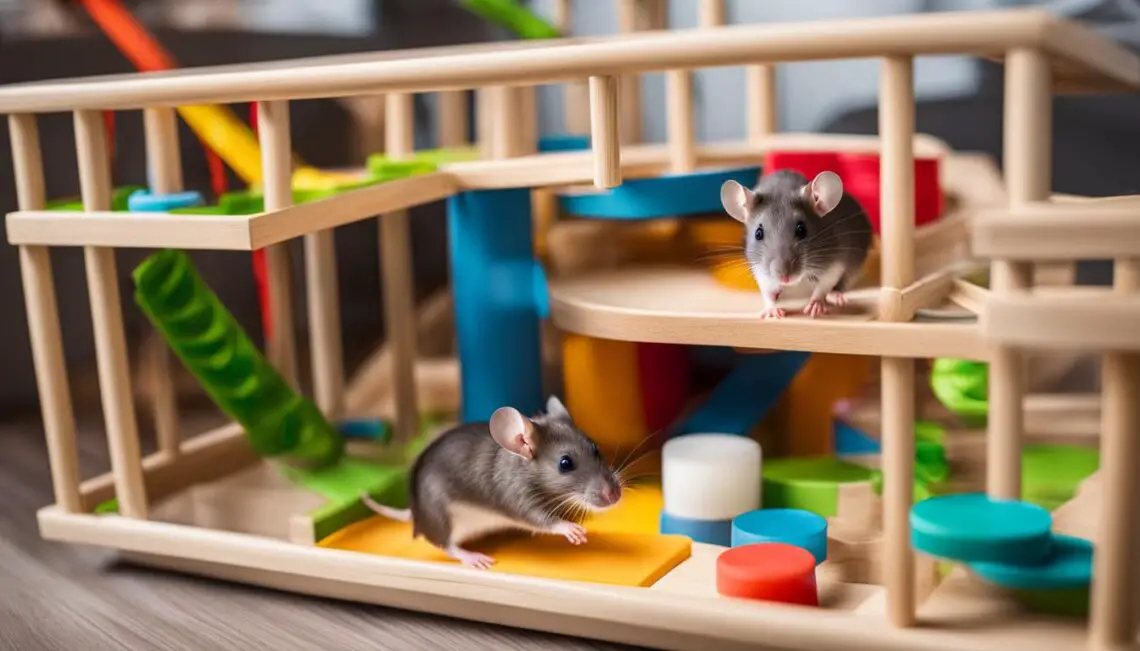

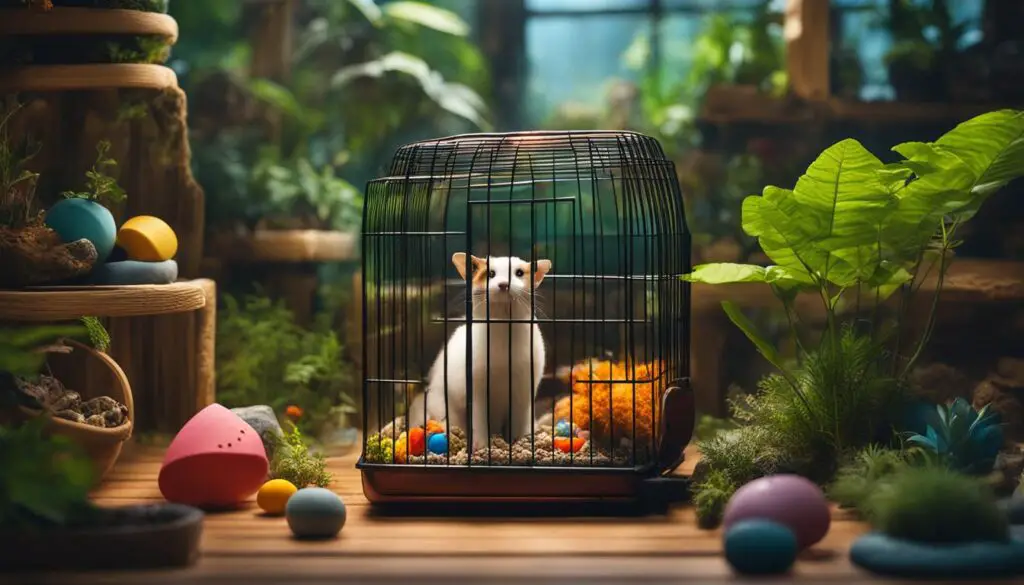
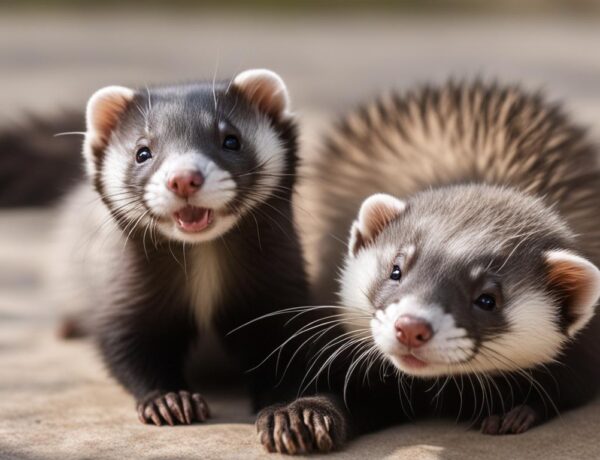
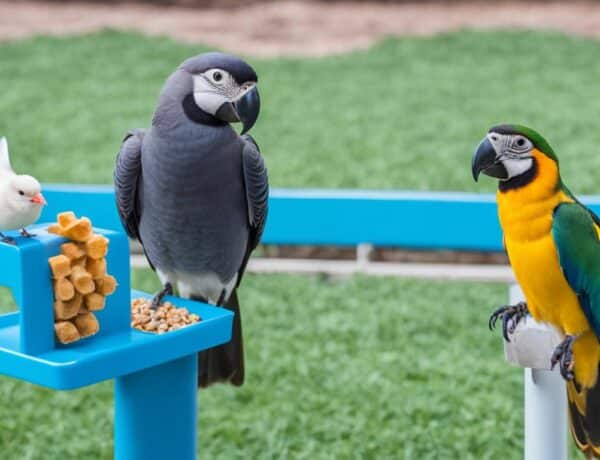
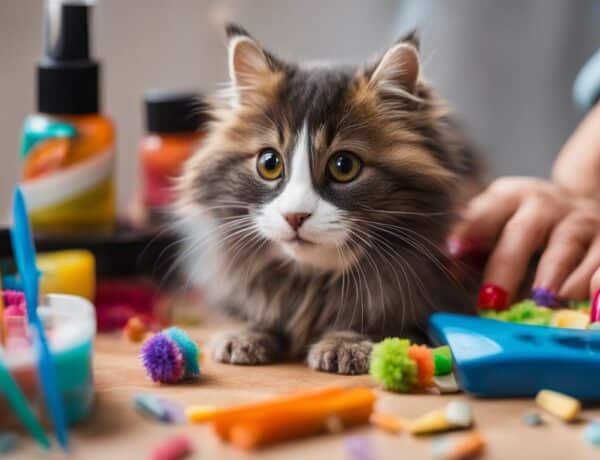
No Comments